Podcast transcript: How can we make procurement smart?
Read the full transcript for this episode of the IT Pro Podcast
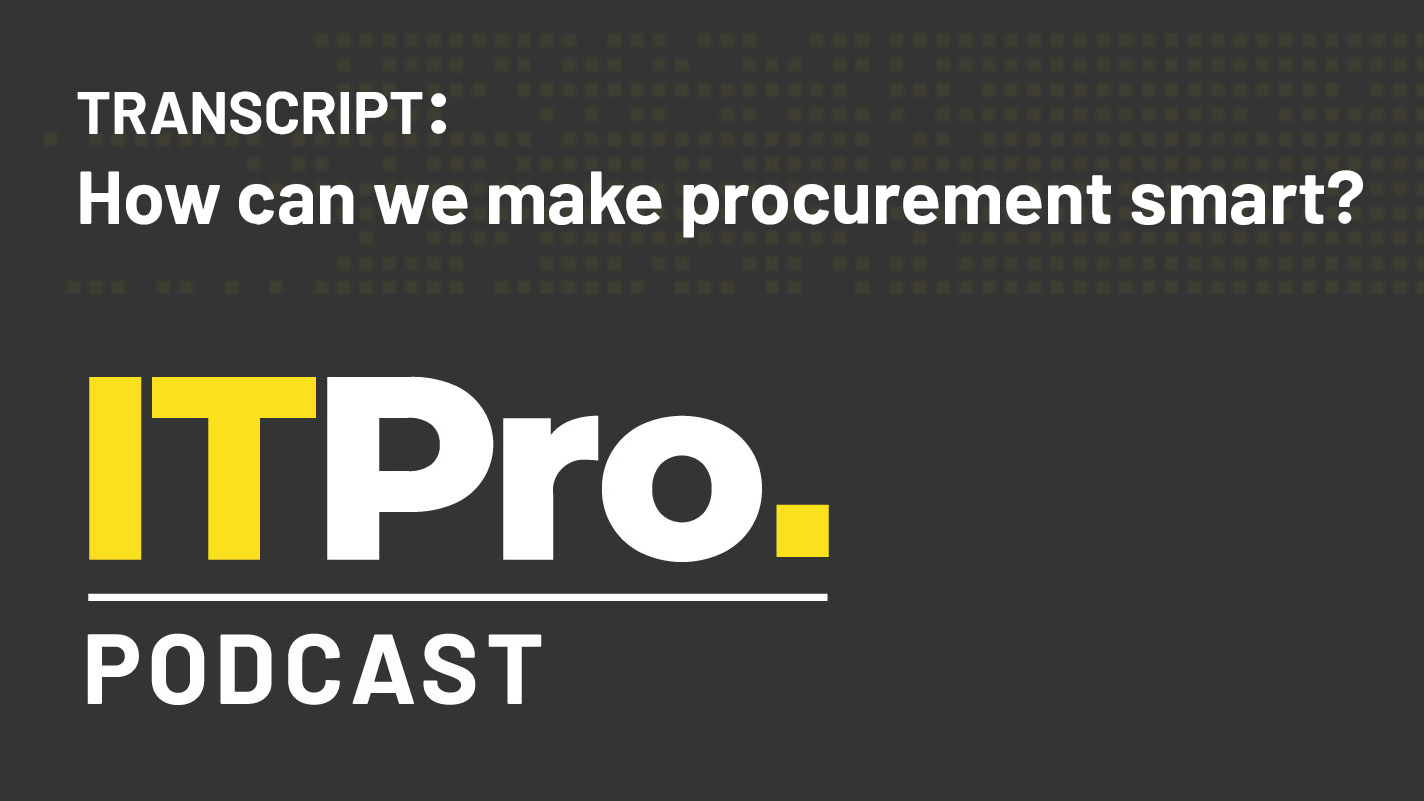
This automatically-generated transcript is taken from the IT Pro Podcast episode ‘How can we make procurement smart?'. We apologise for any errors.
Rory
Hi, I’m Rory Bathgate. And you’re listening to the IT Pro Podcast, where this week we’re discussing procurement.
Whether a firm is looking to ramp up its manufacturing, expand its IT solutions or improve quality checks across its supply chain, the initial stage of accessing good partners and contractors to make these changes happen is key. Procurement is an ongoing, complex process, and can be a drain on any company’s resources, even with increasing levels of automation.
This week we’re speaking to Sudhir Bhojwani and Lalitha Rajagopalan, co-founders of supplier engagement platform ORO Labs, to talk about how the implementation of automation has to be balanced with a clear strategy in order to cater to specialised services.
Lalitha Rajagopalan
Thanks, Rory. Glad to be here.
Sudhir Bhojwani
Thanks, Rory. Nice to meet you. Nice to be talking to you this morning.
Rory
Lovely to be talking to you. So just to start off with, broadly, what kind of issues in the market in the landscape? Did you identify that that led you to creating or, and smart workflows?
Sign up today and you will receive a free copy of our Future Focus 2025 report - the leading guidance on AI, cybersecurity and other IT challenges as per 700+ senior executives
Sudhir
So the core issue that we identified is the amount of manual effort and pain that a business user fields in a company when they have to procure something, procuring something very simple like, for example, Amazon business has made great strides in the procurement world. And people, more and more companies are connecting with Amazon business and other suppliers. Amazon business is just one example. Of course, other such companies make simple buying easy. When it comes to procurement people are not just buying stuff, which are commoditized on Amazon business, but they're also buying something more complex like services, for example, equipment, for example, software, technology purchases. So these purchases are larger purchases, they are pretty complex purchases, and purchasing through the system. It's a lot of manual effort, actually today, in every organisation. We come from a city Alibag, where we spent a lot of time a lot of big companies, we found even the best adopted procurement companies who have a procurement system in place, a lot of their purchases is still highly manual. And experience is, let's say, not Amazon-like and it can take weeks and months to work with suppliers. And if you take on supplier perspective, the pain is even more acute, if I'm a small supplier trying to work with a large company. And it takes me two months to get to the process. Because I just happen to be a small supplier and the customer is treating me like a big supplier. So that conflict that exists drove us to thinking hey, can we automate this workflow in a more interesting way where the friction between buyer and supplier can be reduced considerably. And that's what drove us to building this. And because current solutions were not built to solve the core user experience and removing the friction problem, to the degree we think we can and it's also driven by the complexity of the semantics, people assume people are buying standardised goods and services. The current procurement systems are designed for standardised goods and services. But people forgot that people buy a lot of non-standardised goods and non-standardised services and technology purchases have gone up, compliance requirement has gone up, everything has just actually gone up. And how do you still keep things ticking along and make the workflow automated? That's kind of why maybe Lalitha can chime in as well.
Lalitha
I think one thing I'll add here is that if you look at the current procurement technologies, they were all designed for a very simplistic spend approval, like yes/no. And most of it is basically, you know, should you be spending this money or not? And most of the time answer is no, unless it's been, you know, pre-procured by procurement kind of a thing. So even procurement has a big pain here, because right now when it comes to anything that is bespoke, or something that is specific to a business need, like I'm in marketing, I want to work with an agency for a specific project or something like that. Procurement really doesn't have any tool beyond throwing people at the problem they can take a ticket and then they have to figure out how to help the user navigate it. So feel the procurement technology is very stuck in a simplistic world. And procurement is not getting the help that they need, to help the business user make do it faster, do it better and keep the company protected. And I think that friction is in all user points and context is missing in how decision making happens today, if you just make it about spend approvals, and we felt that it was time for a richer and more cracked experience which will make it faster.
Rory
So not just, kind of, smoothing those those decisions, but also deepening those decisions and putting them into like you're saying into a wider industry context, and allowing businesses maybe to view a wider range of suppliers with with all of the necessary context? I think at this point, it could be good for those who don't know if you both could briefly outline what exactly Smart Workflows does in comparison to the standard model.
Sudhir
If you think about a procurement workflow today, most people will relate directly to this, we'll use the word approvals. People think of it as approvals. But the truth is, a lot of things happen in a procurement which is which goes above and beyond approvals. So as an example, if I want to buy the marketing service that Lalita mentioned, first thing I would like to know is, is the vendor already a vendor that we have done business with in the past? Second thing we'd like to know is, is an MSA in place? Are the contract rates in place place? What ave they done for us in the past? Do we need to get IP agreements in place? Is this an engagement that requires GDPR compliance? Is this an engagement that will require some more security consideration? So that's lots of considerations that are way beyond approvals, budget approvals. And, I also like to use the word, it really is a workflow, things go through step different steps in the process. Different people actually do certain things beyond approvals, like for example, negotiating a contract, I would not think of this as an approval, you negotiate a contract, and potentially afterwards, the contract needs to be approved, actually. So a lot of stuff actually happens. So when you think in that direction, so workflow is actually quite more complex, and it's not just approvals. That's how I would think of the problem more than anything else. And the reason we do things we decided here, we call it smart procurement workflows, it's plural workflows, because we don't believe procurement is one workflow. Because if you think about it, the way people procure marketing is not the same way, the way people buy software. It's definitely not the same way people buy raw materials, very different processes, you can imagine the workflow is different, the requirements are different, everything is different people involved are also different. And the reason we thought 'smart' is also equally important, is for the workflow to be effective, it needs to be smart as an example. It should not be the same whether I'm working with a brand new vendor, or when I'm working with a vendor, which I've already done business with, but my certificate is in already. Let's say I'm doing some construction-related work. And the health and safety certificate is already in place. Should we again, do health and safety? The answer could be yes or no depends. If the safety was done 30 days back, and I'm just starting a new, maybe you don't need to do it. On the other hand, if the safety certification was done two years back, maybe you need to do it again. On the other hand, if it was never done, you definitely need to do it again. So, the smartness really also means it needs to understand these concepts natively, and there are many such concepts, health and safety is just one. Sustainability is another concept, security is another, privacy is another, there are lots and lots of interesting concepts that companies have to deal with. And if you don't do smartly, you will end up doing same thing again, and again, for no good reason.
Lalitha
If you look at organisations today, you know, compared to say, 10-15 years ago, 10-15 years ago, it was very command and control kind of a model, which is very hierarchical. And you could have, you know, the process kind of laid out top-down, right. And I think the big difference in how people work today, modern companies are much more democratic employees have a lot more agency to do what they need to do to get the job done. And when people talk about oh, "speed of business" and everything, there's something fundamentally at core that's happening, where, you know, companies give a lot of room to people to operate the way intelligent people would want to operate based on the context, they're not really dictating the procedural aspects as much. But that also means that anything that's a centralised function, whether it's procurement, whether it's IT, whether it is legal, etc, they are stuck in a world where they have to have a customer service mindset with the employees and organisation to help them you know, to do what they need. And we see saw in IT, right? It went from, 'you can't even upgrade your browser' to you know, 'bring your own device', kind of a thing. And so it's really important to understand that then the central functions there is, it's very hard for them to always keep up with the context, and they are shrinking and shrinking their NPS score, and the operational SLAs are highly scrutinised. And so, our goal is that smart procurement workflows have to have context embedded in it, and it should adapt organically to the context. You don't have to rely on a good person in every department reading every request correctly, and doing the right thing. Smart nurses can auto context triage the workflow as it moves through the system, can the system itself basically make it easier for legal to review or IT to get the task done, or whatever it is? And it also needs to have understanding that oh, legal likes work in a different system, or IT uses something else, to be able to integrate a process across different tools. So 'smart' implies all of these things.
Rory
That's interesting what you're talking about with the kind of cross silo experience there. Something I know that a lot of firms implementing automation right now are contending with? Is this idea of things having to still be flagged to a to a higher level, how do you balance a kind of end-to-end, cross-silo solution with that need for maybe certain huge procurements or maybe ones that are flagged by the system as a one off? How do you balance that with that seamless end-to-end experience?
Lalitha
So it's really interesting, you bring that up, right? Like, one of our customers is, you know, a fast growing biotech firm. They have a policy, which says that, hey, anytime you spend more than $100,000, you need to have competitive bids. Okay? Now, oftentimes what happens is, when a scientist is trying to work with something, you may have a very unique thing that you want to get. And there's a bit pretty much a single supplier, who basically is the right supplier there, okay. Now, what you do not want to do is to automatically keep red flagging this, and it becomes a red herring, it's a false alarm kind of thing. So how do you basically make sure that you're helping the business user, and you're helping the procurement, and you're helping the executor who has to approve the one off? Think about it that way, right. So what a smart workflow will do, is it will actually not wait till the user fails, saying that, "Oh, you don't have an alternative," it will tell him right up front, it'll give him the in-guided policy guidance to say, "Hey, you're trying to buy something that's going to cost more than 100k. The company policy says that, you know, it should have a competitive bid, do you have a competitive bid? Or an alternate supply you'd like to consider? Or is it a unique situation? Like it's a unique supplier or something like that?" So the user is guided to provide exception, right there, they don't fail it and then go back. And then the second thing it does is that, from a procurement process perspective, it allows them to say, "Yes, I know this to be true." So they can kind of comment or annotate that. And it also allows, nobody wants it to go to like, you know, the CEO without the you know, CEO minus one kind of being known notify. So you can compose a workflow to say, hey, heads up to someone else, but then summarise it for their review to say, hey, the reason why this is so is because of this. So it comes with the notes there. So you're not trying to then think back and say "hey, why are we doing this?" or something. So how do people feel comfortable making decisions only if they understand the context? So, can you gather context along the way? So smart workflow doesn't mean that oh, intake is complete? And after that is just, you know, yes/no, yes/no. It basically collects context along the way. So that's one of the ways in which we make sure that, because at the end of the day, it's human beings who are deciding and human beings are doing it asynchronously. How do you make sure we carry context along?
Rory
That's very interesting. It seems like instead of keeping those processes under the hood, as it were, with automation, maybe that just that extra bit of context, that extra insight into why an AI is making the decisions it's making can kind of in turn, make all the difference when it comes time for people to make decisions.
Lalitha
What you said is exactly right, the visibility. Because today, users feel frustrated with procurement, because they are like kids stuck in the backseat of the car asking the parents "are we there yet? Are we there yet?" It's like a complete black box, and one big part of it is making the visibility of what's going on and why it's going on.
Sudhir
All right. I think it's such a, I mean, if you this is people think of this procurement as a ticketing problem. So hey, I just need to create a ticket and somebody will work on it. The truth is procurement is actually quite a complex workflow. That's why we really wanted to focus on the workflow. And we had, we took a workflow from from one of our customers who is live with us globally, now. They're doing, they're executing workflows in 60 plus countries with us. And they had the current workflow implemented on a ticketing system. And what they realise is, even though everybody was creating a ticket for someone to execute, it was not consistently even executed. Different people who got different tickets, they're executing it differently. Because it was not thought of it as a workflow problem, it was thought of as a ticketing prop. problem. We believe what procurement is much more of a workflow problem than a simple ticketing problem. Of course, the ticketing involved in the middle of the process sometimes, right, of course, but it's much more of a, "Hey, what is the step one? What is the step two? And how do all these things come together?" It is a complex data problem. How does the data flow from point A to point B? How does it and how do the decisions get made? How did the risk event how is the risk evaluated along the way, and that lots and lots of interesting stuff that you have to do to make the workflow be executed in a consistent and accurate way every single time? Regardless of who's involved?
Rory
That's really interesting. On that wider point of visibility that came up, I know that something that your system advertises is the idea of qualified suppliers, showing suppliers that overtime, accrue a kind of rating or qualification. I was wondering if you could talk a bit about how precisely that system works, and also how you balance a kind of internal qualification system with maintaining competition in the market, and maintaining a range of suppliers for any given customer.
Sudhir
So I'll start broadly and then I'll let Lalitha also chime in. So it's a good question. Firstly, let me start by saying, in procurement, the most complex object is supplier object. Like in CRM world, you would say customer is the most complex object. In procurement world supplier is the most complicated. If you look at the supplier in ERP, it has more fields than we can imagine. And every customer we talked to, including small customers, by the way, and I'm not talking just about really multinationals, even small customers, they have problems such as duplicate supplier records. My data is not clean. It is like my mailbox, I clean it, it gets dirty before I know it. So that problem is absolutely true. And then the question then becomes is, why is this even important? If you think about it, I'm trying to do business with a supplier. And I don't even have a good view of a supplier object. How can the workflow be smart? So our core premise is, we need to have a good understanding of supplier objects. So when you think about auto, what one of the important things in smart also is, we are not just a horizontal workflow engine that can solve any problem and every problem. We are geared to solving procurement, because we have a deep understanding of the core supplier object. So we understand how does the supplier object map into ERP, whether it's Oracle, whether it's SAP, whether it's NetSuite. We know why duplicate vendor records exist. And people think, "Oh, they exist because of a mistake". No, sometimes duplicate vendor records is the right answer. Let's say like, one company acquires another company, they both were doing business with the same exact supplier. It's not reality to just merge the two vendor records off requisition immediately, it's not reality, because there could be some transactions out there invoices to be paid, etc, etc. And there could be other terms too, right? So various reasons why I cannot merge the two records, but I want to still merge my ERPs. Right? So duplicate vendor records will exist. But one thing we saw actively is we give a view of the supplier, which is beyond duplicate supplier records, but now think what supplier itself, it also happens to be a company, which may have its own legal structure. They like, we are a very small company, always a small company, we are a startup. But we have two legal entities, one in here, one in India. And if you look at some of the other companies, they will have hundreds and thousands of legal entities. When you try to do all of this stuff. User is possibly extremely confused, "I have no idea what this jargon means. I don't understand what ERP means to begin with. I don't know what legal entities mean to begin with, secondly." But these two worlds have to come together, unfortunately. And the workflow has to do it effectively. So to answer your question, a lot of that revolves, that's the first piece of the puzzle, this is just the basics. The second thing after that is if you ask — the running joke in procurement, if you want to know what your company is doing with the supplier, ask the salesperson. And the supplier's like, he will tell you what your company is doing with them. And that running joke continues in the world. So our system is kept, and the running joke happens for a reason. There is no system, there is nobody who owns a supplier object today actually effectively gives a view of a supplier, that is really useful to the business use. Think about it. If I'm a business user, somebody in marketing, I want to find out what are the, what agencies we use to create some sort of production videos last year, or a year before last. Nobody can answer that question today. So our answer, we want to build a system that can answer those kinds of questions in a much more effective way. Lalitha maybe you can add.
Lalitha
I think the only thing that I will add here, is that the end vision for us, right end vision for us is we want to essentially be equivalent of CRM on the supplier side. Okay. And the reason why workflows and this kind of come together is because we realise it's not a data problem, it's actually an engagement problem. So it's really important to have a self-curating view so that when you think about a supplier, the system should logically be able to provide context of "hey, what are all the activity engagement that's going on with the supplier?" Again, going back to what I said about how companies operate today, today, even having view of what supplies my company does business with is very well hidden. So the core of our experience is being able to have that view. And also to enable to your question peer to peer, you know, discussion. And peer to peer ability to understand supply contracts, like think about is the water cooler effect, right? Like, I'm in marketing, I'm a new employee, and I want to start a project, I probably want to talk to other people in my team to say, "Hey, have you guys work with these guys will be like to work, how would it go?" And then you can very nuanced feedback, you get feedback, like, "yeah, this team is great, make sure they assign this project manager, that's the A team. And when you do the contract, make sure they do this, they'll say no, but we've done it in the past, just tell them, you know, this contract, we've done it." This is normal, tribal knowledge that is completely lost. So it's not just, you know, company name, company address, company logo kind of thing, you need this richness of context to enable better decision making. So at the end of the day, right, if great CRM for suppliers is going to help customers, companies essentially work better with their suppliers and make better decisions with the supplier, it should result in two things, I want to be the customer of choice with the supplier because I can work with them better, which means my company employees in my company can work with them better. Which means that every time a supplier shows up, it shouldn't be like, you know, you're starting from scratch, again, name of the company, everything. I should know you I should give you a red carpet welcome, I should know exactly how to work with you. And that tribal knowledge is kind of enabled. So that's kind of how we envision it and it was a long, a little bit of a road to go to kind of build it out that we believe that technology today. That's possible.
Rory
That's fantastic. So do you think that this, you described it as tribal knowledge, do you think that AI offers a kind of new opportunity to retain this tribal knowledge in organisation far longer than normally, you would be able to retain it manually? Because you know, people would leave them and with them, these relationships would go. So do you think that AI is a kind of a it can it can store that memory and retain that through through the years?
Sudhir
To be honest with you, I would say the two parts of the puzzle answer. First is not even AI. It's just the basic structure of the system. And the system is geared to store the data in a some, in I would say smart way. AI is different in what you learn from it, right? So first is can the system, I think you also asked the question, what granularity can you sort the data? Is the system designed to, does it understand the complexity that, hey, the supplier object exists in ERP with duplicate records, or the supplier object also exists in my contract management system. But that looks very different. And there's no connection between the two systems. Then the supplier is an existing company. So that whole jargon, it understands first and foremost, and that's not an AI, that's a more of a structural problem. Do you have the intelligence to do this? Now second, is what you can derive out of it. And I believe that's where the AI can be really, really helpful. A very simple example. We don't think of it as an AI. But nobody ever goes to Google on page number two, every result comes on page number one, is it AI? Or is it not AI? It's definitely doing a lot of learning, I tell you that much, the algorithm does a lot of learning. It's a highly, very curated high, it does a lot of learning, based on which it knows what what results to put on the rock top rank. So I think those are the ways we are thinking about AI problems. If people are saying, "Hey, can you make sure that if I type in, you know, almost what I'm typing and why I'm typing and based on that the recommendations that come out, are very accurate?" So this way, I can make decisions faster, smarter, better. And that's how at least the AI will come into play. And then of course, we can take it to the next level. How can natural language be used in a more interesting way? Because there are some really interesting power in procurement. Like for example, when you look at procurement of the cost of a commodity, what are you trying to buy with the supplier? Everybody's trying to map to this concept called 'commodity tree'. Some of some commodity trees are extremely complex, there's something called UNSPSC, which has like 27,000 nodes in it. Now picking a node from 27,000, good luck. I mean, and they're horribly — I mean, not horribly, it's not designed for human being let's call it, it's designed for systems. So the human being can't necessarily understand that. Can we use natural language for user, to describe what they're trying to do, and we figure out the rest? Simple problem, of course, compared to the supplier problem, actually. How do you make sure the suppliers are aligned correctly, etc. So yeah, that's how we're thinking about AI. So there's a lot of AI work that is needed to make this happen. But also the base, base application layer has to be strong to handle this, otherwise, nobody is gonna help.
Rory
So with all of that in mind, bringing in the improved structure, bringing in AI, where it helps. Would you say that this is more of a long-term investment for businesses, that the savings or the returns that we'll see are, are going to be more in the long term? Or are you also finding that customers are finding that, in the short term, they're seeing things dramatically improve by adopting automation within their workflow?
Lalitha
So I definitely think they have an immediate need, and an immediate ROI to this. So one of the ways in which it's immediate is that we are an audit ready system, which means that companies can feel confident about having an accurate picture of are we compliant in our engagement with the supplier X, supplier Y, okay? And what was done, what was not done? What's missing? So that's the question that you don't have to do analytics and reporting to do is like, right there. The second way in which I think the benefit is pretty immediate, is that often times when Sudhir said that it's all bespoke custom complex things that people are trying to, you know, work with the supplier for, you know, you are throwing people at the problem in a regular ticketing kind of world, only the procurement can keep up in a fast growing companies. Like I'm adding, you know, a dedicated procurement person for, you know, this department, that department. And by composing smart workflows, which kind of bring the context along, you can do more with less people. So I can, my immediate ROI is just operational cost management, right? I can scale more and better with a workflow tool, which is more sophisticated like this. The third value is actually, if you think about the supply chain disruptions and everything, it's really important to know, not just for procurement to know, but for the organisation to know, who are all the suppliers that we already kind of have an engagement with, what are they capable of doing so that I can basically start with searching or existing suppliers, and front and centre that is what is there in our experience. So I definitely think the ROI is immediate. However, in the long term, the long term, it's even more. I think it's an exponential value for you to say that I can have a consistent global process. That I can start my rollout and say UK, but then I can do North America, Asia, whatever. But from a process governance perspective, it can be consistent process, but it is done in a local context way, right? Like in UK, your quality check can be done by the quality team in Manila, maybe you outsource it to somebody. But so this is a checklist that needs to kind of work through etc. Right? So you can do that. And the second thing is also like, you know, I think having, it's a big competitive advantage for customers who say, I know how to work well with suppliers. And to build that internal competency, it's a constant curation and data problem. And that is what rolling this out in a global way would allow them to do.
Sudhir
But I think I like two use cases that highlights the problem. So one use case is, we work with a customer, we work with their marketing team, in particular in this use case. And marketing team says "Hey, my current procurement process will take me two months to work with a new vendor on this kind of a topic on this kind of engagement." What is the value if it comes down to two days instead of two months, to the business? It's not just the savings, definitely the savings. And I'll talk about that in a second. But the in marketing, that means they can do the lead gen faster, which is amazing. So the outcome procurement has been dreaming about how can I do that? How can I have a direct impact on top line, I believe speed is an important factor to deliver value on top line, especially when you talk about the business driven spend not. So that's one. Second thing I would say is, just talking to a CRO of a company. They say we our CFO does a monthly meeting, where we are all trying to say look at given the market conditions, we're trying to see how do we drive the savings? What contracts are possible that we can put a potentially put a pause on so we can save some money though savings is still an important part. And it's gonna get trickier next year, I think, given what we're seeing in the market, right? And they say this meeting is extremely complex the amount of preparation that goes into this meeting, and we still don't have visibility into what we can put a pause on in terms of discretionary spending. So our system, when we implement the workflow correctly, it also generates the right amount of data to make literally real time decisions. Now you can make real time spend management decisions, which actually are very tough to do in current systems.
Rory
That's very interesting, I think that point of of insight through real time data, and also the automation of compliance, are these both pain points that you're seeing common throughout throughout the industry throughout your customers?
Sudhir
Yeah, yeah, absolutely. I think if you look at the spend management problem, if getting more serious, more serious, and people really, really need to have a system. Look, I think spend, you can't manage the spend until there is a full adoption by the business user. So you need a system that first and foremost has the business users, so that adoption is high. Once the adoption is high, and then you need the smart system that gives the data in a shape that you can do real time decision making on that, so that you can control the spine, so generate the right data. So it should not be that it should not just be act as a repository, it should not act as the repository just. So we that so we see that as a pretty big driver. On the other hand, if you look at some regulated industries, like say, financial, financial institutions, like banks, for example, for them, this is not an optional thing. I mean, the kind of fines that you will see without onboarding and offboarding a supplier correctly, not following a consistent process to onboard — not just onboard, offboard too, by the way. Consistently we have seen fines of 60, 70 80 million dollars being applied by OCC. And this is a global problem. So I think on both ends, you'll see really lots and lots of examples.
Lalitha
I mean, to underline the smart procurement workflows, right, Rory, I think that simplistic spend approval is an ok system, if all you want to do is to track bookkeeping, record keeping, cut the PO, pay the invoice somebody approved it. But if you want a modern, I think modern enterprise software has to go beyond that it has to be a system that enables better decision making. And in the CRM side of the world, you kind of see that right? The modern ref tag, the CRM tag, all of them allow for a lot of, you know, a curation to be able to make better revenue management decisions. And I think that there, you don't hear revenue systems CRM system talking about order to cash and stuff like that, right? Procurement technology today still spend approval, you know, source to pay, procure to pay, it's kind of still stuck in that world. And I feel that in order to have a user experience where users actually want to use the system very early, it was only possible if it actually allows them to work better, work faster and make better decisions. And if it is just going to be like, you know, I need to, you know, file taxes kind of thing they will avoid as long as possible.
Rory
So it's it's not just about, it's not just about the fear of replacing workers, which I know is always tied to automation, but it's also about giving workers like we were saying earlier, that context, that ease of mind that they can go in, and the system will assist them in doing their job properly.
Lalitha
Yeah, like if I'm a facilities manager, I'm in marketing, if my job is important to me, and my job depends on me working with a supplier. So I'm, I'm inclined to do whatever I need to do to get the job done. And if a system is default, designed to say "no", for anything that is not standard, I kind of want to avoid it. That makes sense. So I can always ask for forgiveness later I think.
Rory
I think expanding on that, too, do you see this as a model that companies will be aiming for, or should should be aiming for in the next few years? Implementing not just more optimised workflows, but also AI and machine learning in this way to, as a kind of a backbone and the back office, but also to provide this this extra context?
Sudhir
Yeah, absolutely. I mean, I think the supply chain disruption has made supply chain as well as procurement, a whole lot more important and opened people's eyes that, hey, this actually impacts us. This is not just a back-office function, where a sub-optimal system will suffice. Or just a back-end process on an Excel is also okay. It's okay for us to not even know which supplier does what for us. And that is hidden in an Excel sheet. And we can't figure out from a spend management perspective which projects or which contracts we can put on pause and save money. All these decisions are important, and if not done in real time, I think people are starting to see this. So if you look at the general investment in SaaS, obviously CRM always leads the way. Everybody wants to make money first, I think before they worry about saving money, generally speaking, so the CRM always sees a lot of investment. And HR investment is natural, you have to do an HR investment, you cannot not have hire people and not know how to pay them, or not know how to track their benefits. So HR investment is clear. So the procurement has been the almost a little bit, in the back in the queue. But now the supply chain disruptions, and the dependencies on global economy are now more and more things are coming local as well. So this whole shift in the global economy is, people are realising, oh, this is an important part of the puzzle. This is not just Excel kind of a system that I can live with, I really need to have a smarter system. So I believe this, this area is gonna see a tremendous investment in next five years. That's kind of our bet anyways.
Lalitha
Yeah, so basically, you were using the word backbone, right. And I think that, you know, I see ourselves as a new age platform, which is actually not under or behind, but more on the top right. And I think that a good analogy to think about is actually smart home automation, right? Like, everybody has old homes with old wiring, etc. But if you think about modern home automation stuff, it is doing two things. One is my smart light bulb senses, its context of that, "oh, it is getting dark so I need to switch on". Or my you know, "resident is away, so I need to pretend that there are human beings here", right? You know, and it basically I can talk to it, it's very talk to me baby kind of thing, I can say, "Hey, turn on the music in the living room, it's gonna rain, therefore, I should turn off the sprinklers" kind of thing. So and I think that in enterprise software, especially the SaaS explosion, with every department having a very specific tool for doing some job, there's a new layer of technology, which is more like a fabric, which is the word for these users, which is going to unify the entire context. But it's not just you know, routing, it's not like an RPA kind of thing, like take it from system A to system B kind of thing, just a routing logic kind of problem. It's a context gathering, and context service problem. So that you can essentially provide a layer of seamless start to finish automation, which is kind of what, you know weird enough, in a consumer world, you're trying to do the same thing, like, you know, can the can an operating system run my house kind of a day? Sudhir, can you talk about just one thing, I don't think we touched upon it in a specific way, which is one of the things we're trying to do is to work with external data repositories. Like for example, you know, if a company is a UK-based company, then we know how to work with Companies House to kind of validate that entity and things like that, right? So can you just bring in this data context?
Sudhir
Yeah, I think while customers find it very interesting that we actually integrate with their ERP, and our, one of our goals is to give a good visibility of an existing suppliers. That's a really tough problem, actually. Because as I said, duplicate vendor records exist. So how do we take the existing data and turn it into something that is fully searchable? And I always felt this way, is if I searched for IBM as a company in a procurement system, then I searched for the same IBM on Google, the knowledge panel of Google on the right hand side gives a pretty interesting piece of information. And that information seems to be more interesting than the information I have in the company. When I'm spending $4 million at IBM. How can that be? Public information, public sources have gone a few notches, let's say a lot of really, really interesting data sources. And one thing we are doing is, we are enriching data from various data sources. Obviously, our use case is procurement, we're not trying to build ZoomInfo for our goal is not to be ZoomInfo. But our goal is to really get the right data, so the right decisions can be made faster, and that lots of interesting data sources we're using right now, to get that enrichment done so we can deliver higher value in a smart workflow. So our goal is smart. Smart is important is not just candy, candy word, in the slogan. I believe, without smart workflow, people will continue to do the same thing. Same mistakes will happen, and then we'll wonder why it takes two months, what should take two days, and we believe without proper data, and without the proper, proper context, it will never happen.
Rory
Well, thank you both so much for being on the show.
Sudhir
No, thank you, Rory. It was pleasure, pleasure talking to you, and hope to connect with you again sometime in the future.
Lalitha
Thank you Rory.
Rory
As always, You can find links to all of the topics we've spoken about today in the show notes and even more on our website at itpro.co.uk.
You can also follow us on social media, as well as subscribe to our daily newsletter.
Don't forget to subscribe to the IT Pro Podcast wherever you find podcasts. And if you're enjoying the show, leave us a rating and a review.
We'll be back next week with more insight from the world of IT but until then, goodbye.
ITPro is a global business technology website providing the latest news, analysis, and business insight for IT decision-makers. Whether it's cyber security, cloud computing, IT infrastructure, or business strategy, we aim to equip leaders with the data they need to make informed IT investments.
For regular updates delivered to your inbox and social feeds, be sure to sign up to our daily newsletter and follow on us LinkedIn and Twitter.
-
 Cloudflare is cracking down on AI web scrapers
Cloudflare is cracking down on AI web scrapersNews Cloudflare CEO Matthew Prince said AI companies have been "scraping content without limits" - now the company is cracking down.
-
 Swiss government data published following supply chain attack – here’s what we know about the culprits
Swiss government data published following supply chain attack – here’s what we know about the culpritsNews Radix, a non-profit organization in the health promotion sector, supplies a number of federal offices, whose data has apparently been accessed.
-
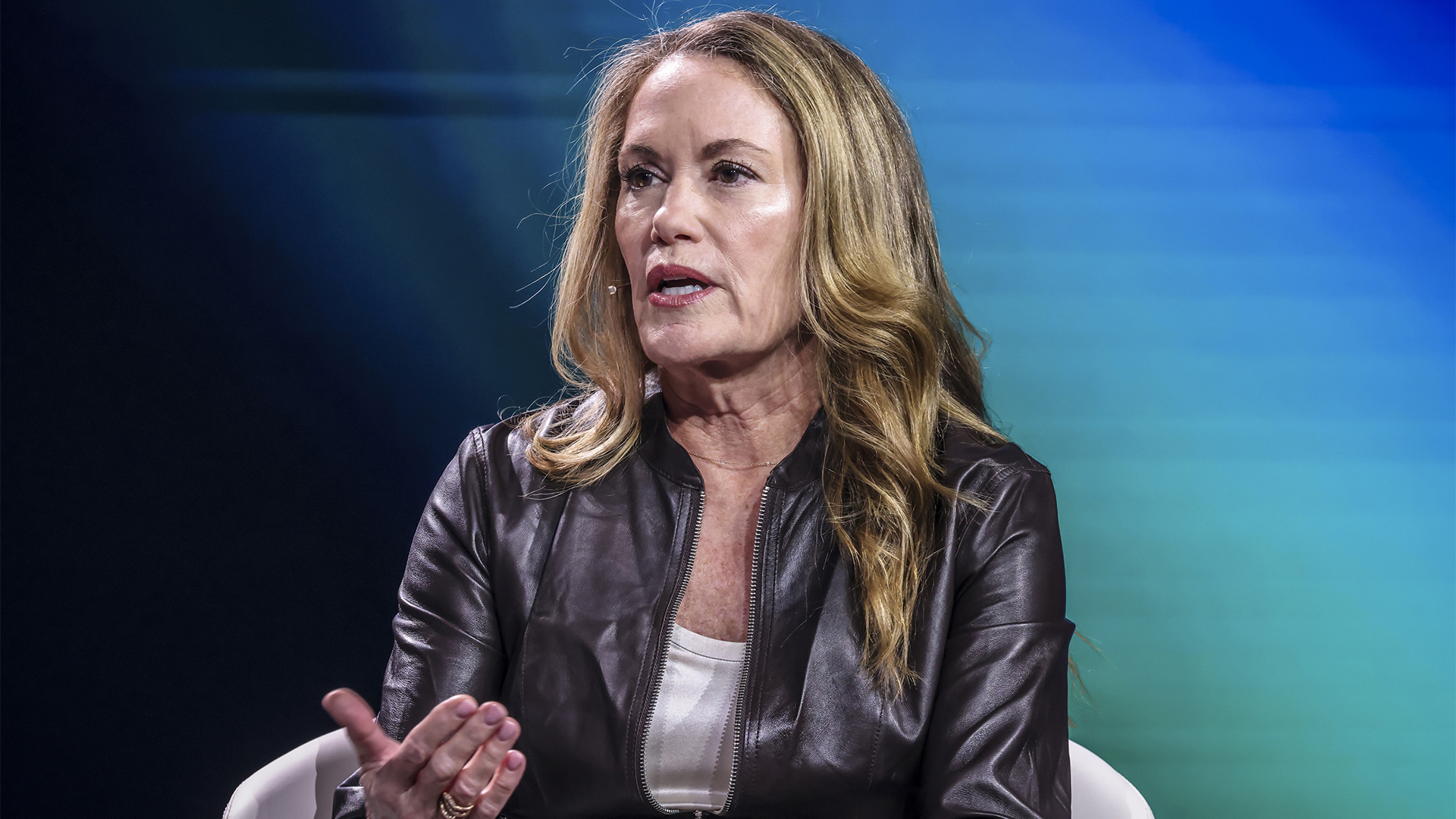 Can robots work safely alongside humans? This one industry leader thinks we're not far away
Can robots work safely alongside humans? This one industry leader thinks we're not far awayNews Humanoid robots and people will be able to work truly side-by-side this year, according to the CEO of one leading robotics company.
-
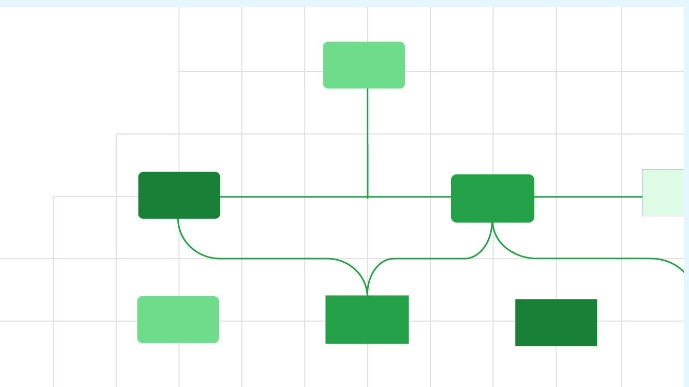 The power of AI & automation: Proactive IT
The power of AI & automation: Proactive ITWhitepaper Automation strategies to dynamically and continuously assure cost-effective application performance
-
 Magic Quadrant for enterprise conversational AI platforms
Magic Quadrant for enterprise conversational AI platformsWhitepaper An evaluation of the conversational AI platform (chatbot) market
-
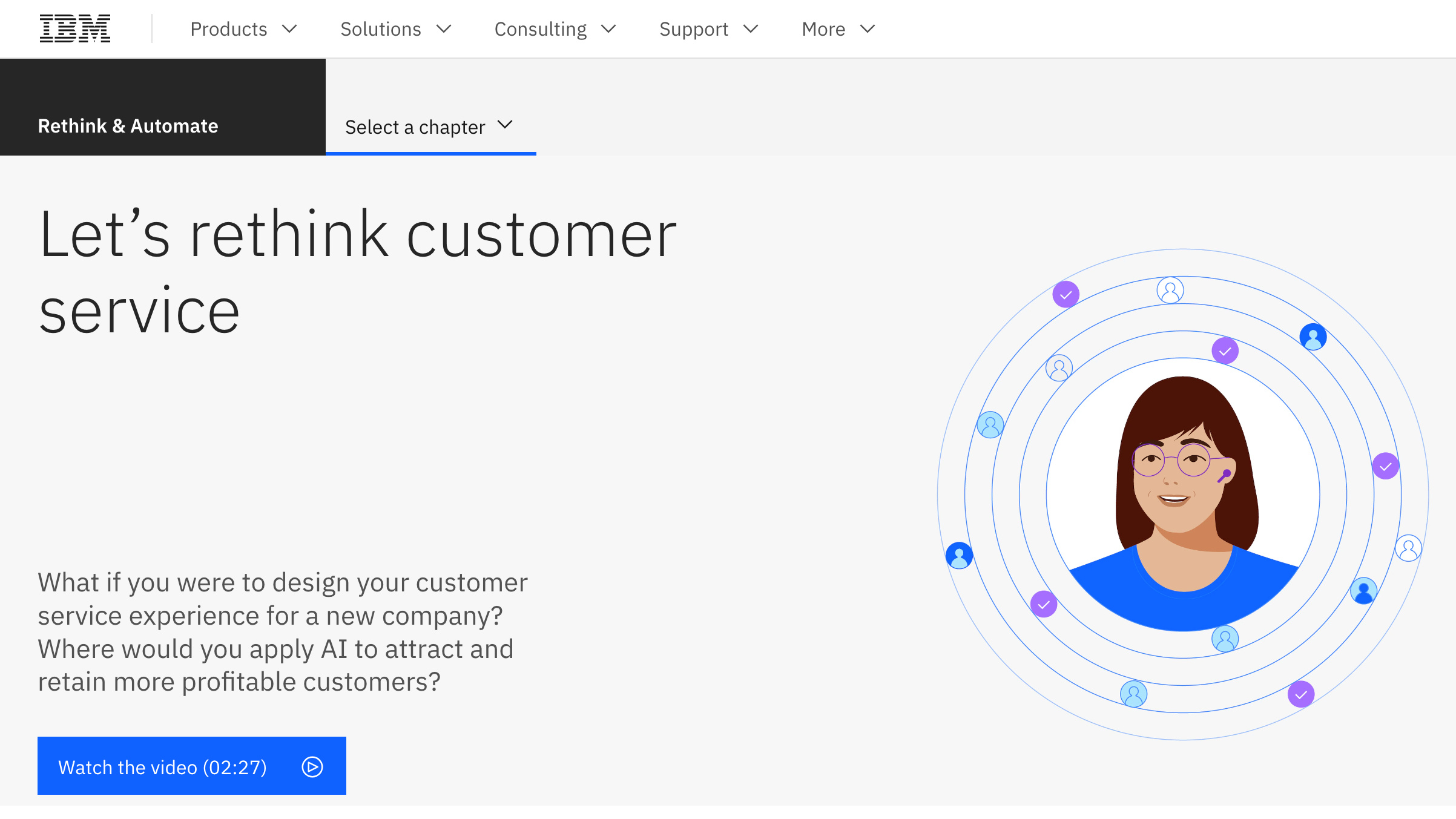 Let's rethink customer service
Let's rethink customer servicewhitepaper Discover new ways to improve your customer service process
-
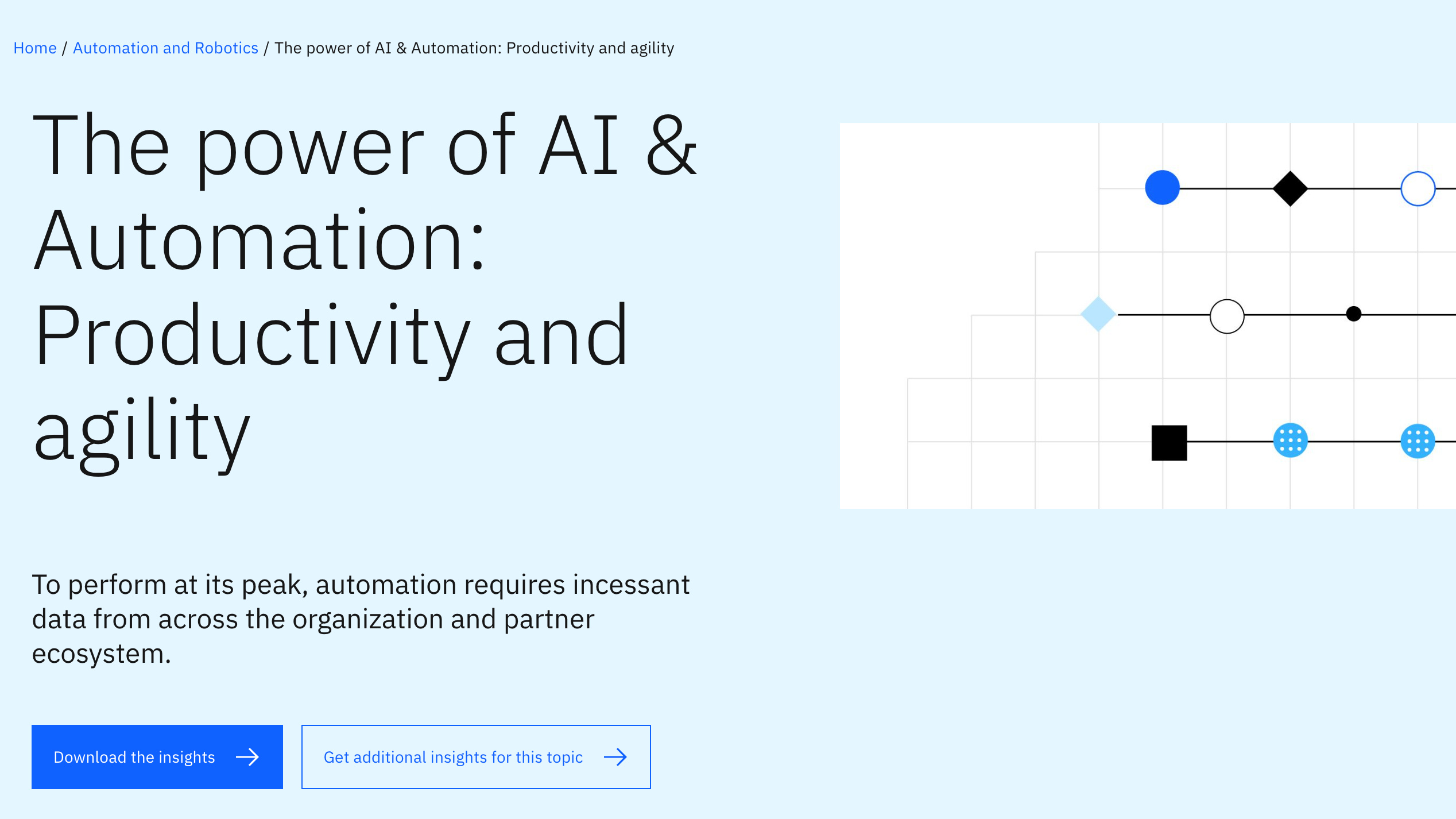 The power of AI & automation: Productivity and agility
The power of AI & automation: Productivity and agilitywhitepaper To perform at its peak, automation requires incessant data from across the organization and partner ecosystem
-
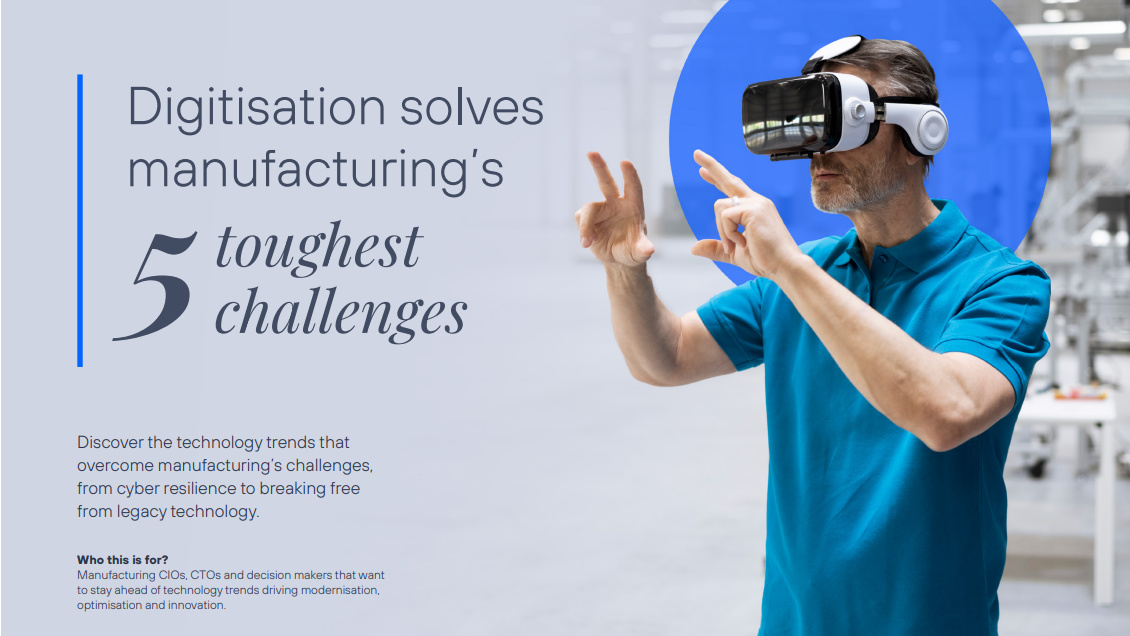 Digitization solves manufacturing’s five toughest challenges
Digitization solves manufacturing’s five toughest challengesWhitepaper Discover the technology trends that overcome manufacturing’s challenges, from cyber resilience to breaking free from legacy technology
-
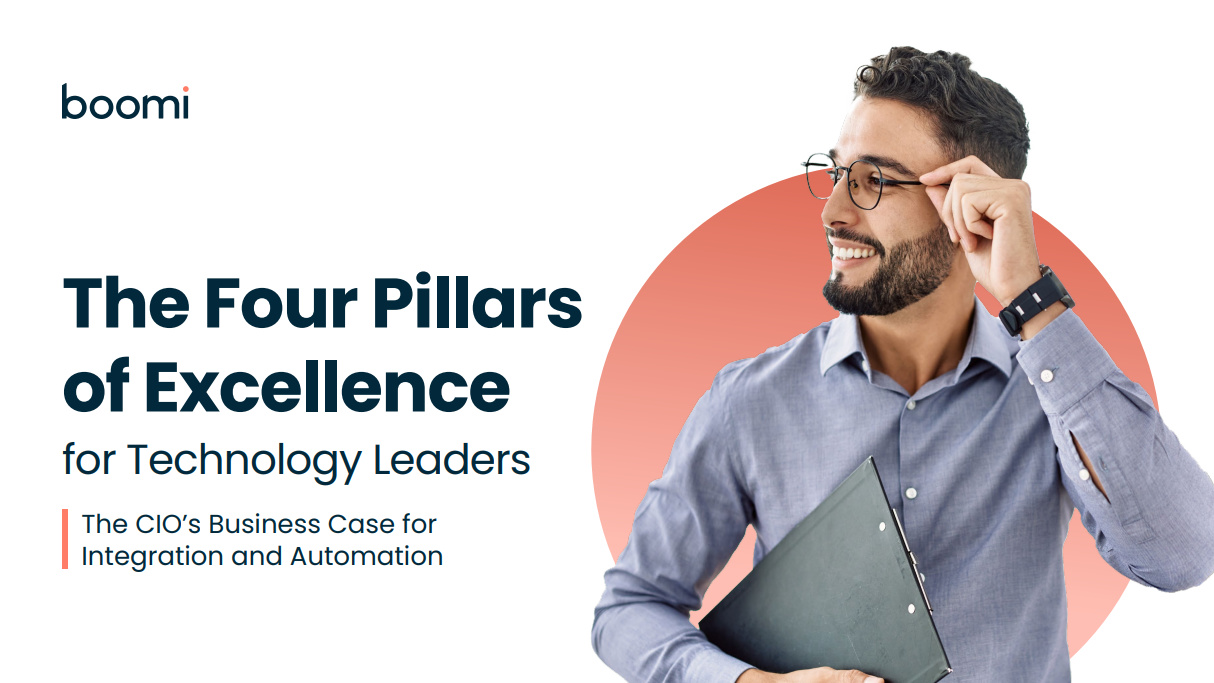 The four pillars of excellence for technology leaders
The four pillars of excellence for technology leaderswhitepaper Download this CIOs business case for integration and automation
-
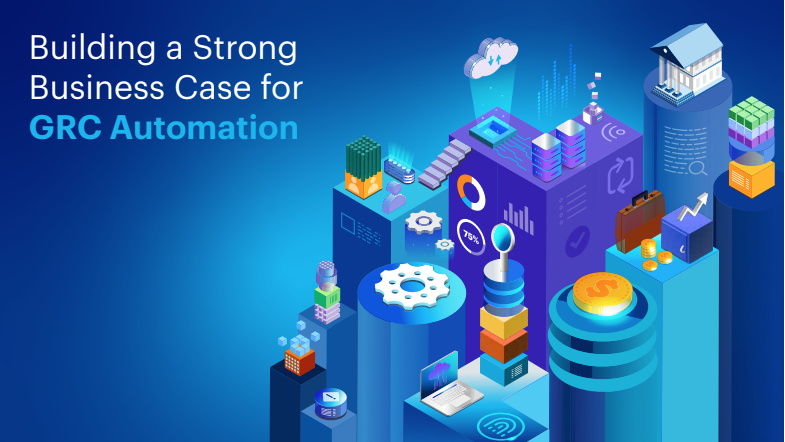 Building a strong business case for GRC automation
Building a strong business case for GRC automationwhitepaper Successfully implement an innovative governance, risk & compliance management platform

